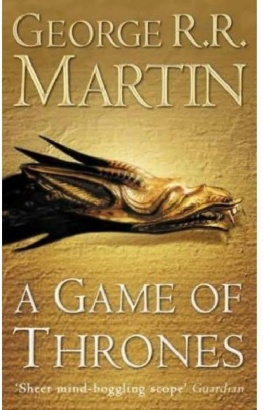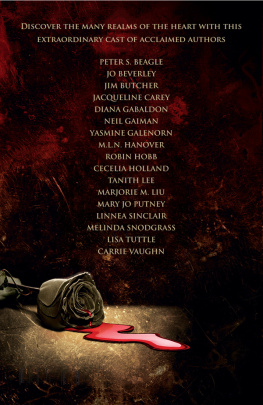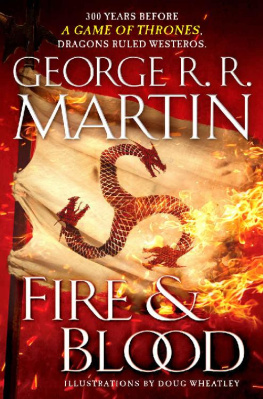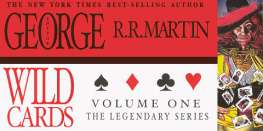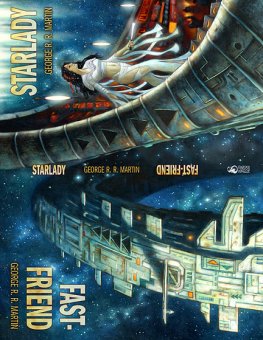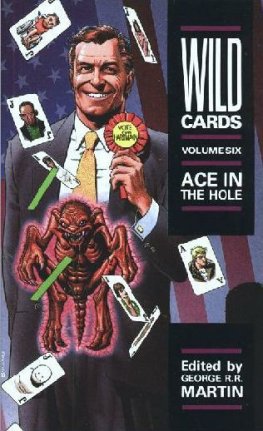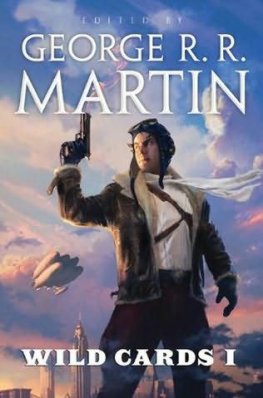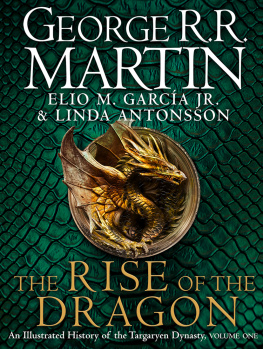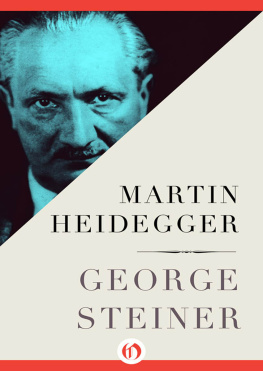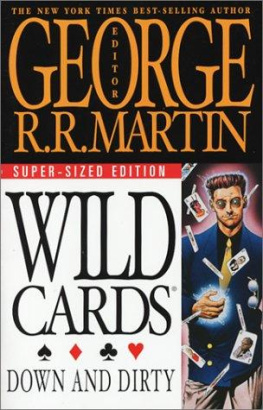George R. R. Martin - Dreamsongs, Volume II
Here you can read online George R. R. Martin - Dreamsongs, Volume II full text of the book (entire story) in english for free. Download pdf and epub, get meaning, cover and reviews about this ebook. year: 2007, publisher: Bantam Spectra, genre: Detective and thriller. Description of the work, (preface) as well as reviews are available. Best literature library LitArk.com created for fans of good reading and offers a wide selection of genres:
Romance novel
Science fiction
Adventure
Detective
Science
History
Home and family
Prose
Art
Politics
Computer
Non-fiction
Religion
Business
Children
Humor
Choose a favorite category and find really read worthwhile books. Enjoy immersion in the world of imagination, feel the emotions of the characters or learn something new for yourself, make an fascinating discovery.

- Book:Dreamsongs, Volume II
- Author:
- Publisher:Bantam Spectra
- Genre:
- Year:2007
- Rating:5 / 5
- Favourites:Add to favourites
- Your mark:
- 100
- 1
- 2
- 3
- 4
- 5
Dreamsongs, Volume II: summary, description and annotation
We offer to read an annotation, description, summary or preface (depends on what the author of the book "Dreamsongs, Volume II" wrote himself). If you haven't found the necessary information about the book — write in the comments, we will try to find it.
Dreamsongs, Volume II — read online for free the complete book (whole text) full work
Below is the text of the book, divided by pages. System saving the place of the last page read, allows you to conveniently read the book "Dreamsongs, Volume II" online for free, without having to search again every time where you left off. Put a bookmark, and you can go to the page where you finished reading at any time.
Font size:
Interval:
Bookmark:
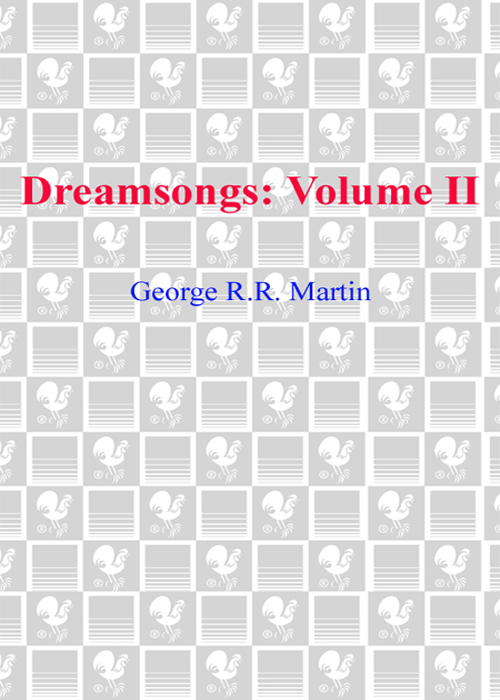
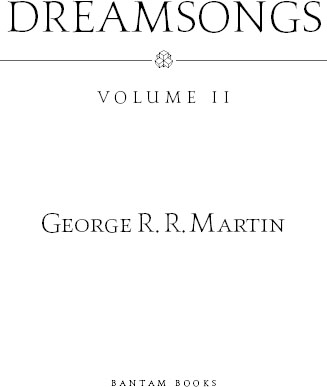
CONTENTS

SIX
A TASTE OF TUF
SEVEN
THE SIREN SONG OF HOLLYWOOD
EIGHT
DOING THE WILD CARD SHUFFLE
NINE
THE HEART IN CONFLICT
for Phipps, of course,
there is a road, no simple highway,
between the dawn and the dark of night.
Im glad youre here to walk it with me.
SIX

A TASTE OF TUF
MY CAREER IS LITTERED WITH THE CORPSES OF DEAD SERIES.
I launched my star ring series with The Second Kind of Loneliness and Nor the Many-Colored Fires of a Star Ring, then lost interest and never did a third story.
A Peripheral Affair was meant to be followed by the further adventures of the starship Mjolnir and the Good Ship Lollipop. None ever appeared, for the simple reason that none was ever written.
My corpse handler series went all the way to three: Nobody Leaves New Pittsburg began it, Override followed, and Meathouse Man brought it towell, a finish, if not an end. A fourth story exists as a four-page fragment, and there are ideas in my files for a dozen more. I once intended to write them all, publish them in the magazines, then collect them all together in a book Id call Songs the Dead Men Sing. But that fourth story never got finished, and the others never got started. When I did finally use the title Songs the Dead Men Sing for a collection (from Dark Harvest, in 1983), Meathouse Man was the only corpse story to make the cut.
I fared somewhat better with the Windhaven series, perhaps because Lisa Tuttle and I were collaborating on that one, so I had someone to give me a swift kick whenever my creative juices dried up (Lisa also added some swell creative juices of her own). We started out trying to write a short story, which turned into the novella The Storms of Windhaven (a Hugo and Nebula loser) at the prompting of Analog editor Ben Bova. One-Wing and The Fall followed, two more novellas. Then Lisa and I put the three of them together, added a prologue and epilogue, and published Windhaven, a classic example of the fix-up novel; a novel made by cobbling together a series of previously published short stories or novellas.
Windhaven wasnt supposed to be the end of Windhaven, however. Lisa and I meant to continue the tale through two more books and two more generations, showing how the changes Maris started in The Storms of Windhaven continued to transform her world. The second book was to be entitled Painted Wings. The protagonist would be the little girl wed introduced in The Fall, all grown up.
We never wrote it. We talked about writing it for years, but the timing never worked out. When I was free, Lisa was in the throes of a novel. When she was free, I was out in Hollywood, or doing Wild Cards, or a novel of my own. We were a thousand miles apart even when we were closest; then I went west (to Santa Fe and Los Angeles) and she went east (to England and Scotland), and we saw each other less and less often. Also, as we grew older, our voices and styles and ways of looking at the world became more and more distinct, which would have made collaborating far more challenging. Literary collaboration is a game for young writers, I thinkor for old, cynical ones trying to cash in on their names. So our Painted Wings never took flight.
My other series all proved to be even shorter, as Ive mentioned here and there throughout these commentaries. There was the Steel Angel series (one story). The Sharra series (one story). The Gray Alys series (one story). The Wo & Shade series (one story). The Skin Trade series (one story). Its enough to make one suspect a terminal case of creatus interruptus.
Ah, but then comes Tuf.
Haviland Tuf, ecological engineer, master of the Ark, and the protagonist of Tuf Voyaging, which is either a collection of short stories or a fix-up novel, depending on whether youre a critic or a publisher. Twas Tuf who broke my series bugaboo for good and all, and opened up the gates for Wild Cards and A Song of Ice and Fire.
As a reader, I had my own favorite series characters. In fantasy, I was drawn to Moorcocks Elric and Howards Solomon Kane, and I loved Fritz Leibers dashing rogues, Fafhrd and the Gray Mouser. In SF, I was fond of Retief, of Dominic Flandry, of Lije Bailey and R. Daneel Olivaw. But my favorites had to be Jack Vances galactic effectuator Magnus Ridolph and Poul Andersons fat, scheming merchant prince of the spaceways, Nicholas van Rijn.
As a writer, I still had dreams of establishing a popular, long-running series of my own. I had an idea that I was certain could sustain one as well. It was 1975, and ecology was a word on everyones lips. It seemed to me that a series about some sort of biogenetic engineer, who moves from world to world solving (or in some cases, creating) ecological problems, would offer no end of story possibilities. The subject matter would allow me to explore all sorts of juicy issuesand best of all, no one else had done anything remotely like it, so far as I knew.
But who was this fellow? It seemed to me I had a terrific concept, but to sustain a series I needed a terrific character as well, someone the readers would enjoy following story after story. With that in mind, I went back and looked at some of the characters that I loved as a reader. Nicholas van Rijn. Conan. Sherlock Holmes. Mowgli. Travis McGee. Horatio Hornblower. Elric of Melnibone. Batman. Northwest Smith. Flashman. Fafhrd and the Mouser. Retief. Susan Calvin. Magnus Ridolph. A diverse bunch, certainly. I wanted to see if they shared any traits in common.
They did.
Two things leapt out at me. One, they all had great names, names that fit them perfectly. Memorable names. Singular names. You were not likely to meet two Horatio Hornblowers. Melnibones phone book would not list four Elrics. Northwest Smith was not required to use his middle initials to distinguish himself from all the other Northwest Smiths.
Secondly, every one of them was larger than life. No average joes in this bunch. No danger of any of them vanishing into the wallpaper. Many of them are supreme in their own spheres, be that naval warfare (Hornblower), deduction (Holmes), hand-to-hand combat (Conan), or cowardice and lechery (Flashman). Most of them are severely idiosyncratic, to say the least. There is surely a place in fiction for small, commonplace, realistic characters, subtly renderedbut not as the star of an ongoing series.
Okay, I thought to myself, I can do that.
Thus was born Haviland Tuf, merchant, cat lover, vegetarian, big and bald, drinking mushroom wine and playing god, a fussy man and formal, who has long since veered past idiosyncrasy into out-and-out eccentricity. Theres some of Holmes and Ridolph in him, a pinch of Nicholas van Rijn, a little Hercule Poirot and a lot of Alfred Hitchcockbut not much me at all. Of all my protagonists, Tuf is the least like myself (although I did own a cat named Dax, though he was not telepathic).
The name? Well, Haviland was a surname I noticed on the wall charts at a chess tournament I was directing. Im not at all certain where the Tuf came from. When I put the two of them together, though, that was
Next pageFont size:
Interval:
Bookmark:
Similar books «Dreamsongs, Volume II»
Look at similar books to Dreamsongs, Volume II. We have selected literature similar in name and meaning in the hope of providing readers with more options to find new, interesting, not yet read works.
Discussion, reviews of the book Dreamsongs, Volume II and just readers' own opinions. Leave your comments, write what you think about the work, its meaning or the main characters. Specify what exactly you liked and what you didn't like, and why you think so.

